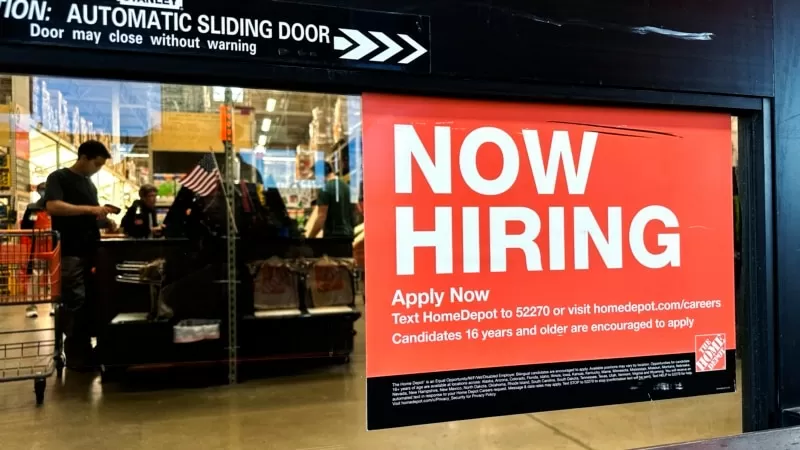The U.S. job market is showing signs of strength as employers added a solid 151,000 jobs last month. However, with President Donald Trump threatening a trade war and implementing policies that could impact the labor market, the outlook for the future remains uncertain.
According to the latest report from the Labor Department, hiring in February was up from a revised 125,000 jobs in January. While this was slightly lower than economists’ expectations of 160,000 new jobs, it still shows a steady increase in employment. The unemployment rate also saw a slight rise to 4.1%, with the number of jobless Americans rising by 203,000.
The sectors that saw the most job growth last month were health care, finance, transportation, and warehousing, which is a positive sign for the economy. However, concerns arise with the federal government shedding 10,000 jobs, the largest decrease since 2022. While the impact of Trump’s federal layoffs is yet to be seen, economists predict that it will begin to take effect in the March jobs report. Additionally, the restaurant and bar industry also saw a loss of 28,000 jobs in February, on top of a loss of 30,000 in January.
Despite the current strength of the labor market, experts remain cautious due to the potential impact of Trump’s policies. Sarah House, a senior economist at Wells Fargo, states that “the labor market continues to hold up, but we’re still a far cry from where we were a year or two ago.” With the administration’s plans to cut spending on programs and slash the federal workforce, as well as imposing tariffs on trading partners, there are concerns about how it could affect job growth and unemployment in the coming months.
The U.S. economy has shown a resilient recovery from the pandemic recession of 2020, leading to an inflationary surge that peaked in June 2022. This prompted the Federal Reserve to raise its benchmark interest rate 11 times between 2022 and 2023, despite expectations of a recession. Surprisingly, the economy remained strong, thanks to a rise in consumer spending, higher productivity at businesses, and an increase in the number of immigrants easing labor shortages.
Although the American job market has remained sturdy, there has been a cooling down from the red-hot hiring seen in 2021-2023. In 2020, employers were adding an average of 168,000 jobs per month, which decreased to 216,000 in 2023 and further went down to 380,000 in 2022. This was followed by a record-breaking 603,000 jobs added in 2021 as the economy bounced back from COVID-19 lockdowns.
The inflation rate also decreased, dropping to 2.4% in September, allowing the Fed to reverse its course and cut interest rates three times in 2024. It was expected that this rate-cutting trend would continue into this year, but progress on inflation has stalled since summer, and the Fed has held off on further cuts.
In February, average hourly earnings rose by 0.3%, slightly lower than the 0.4% increase in January. This figure is likely to support the Fed’s current approach of waiting and observing before making any further interest-rate cuts. With this modest rise in inflation, some Fed officials have stated that they would like to see more progress before making any additional rate cuts.
The consistent growth in employment and an expanding economy have made it easier for the Fed to maintain its wait-and-see approach. However, if companies start laying off workers and the unemployment rate rises, there could be increased pressure on the Fed to cut rates.
In a recent statement, Fed governor Chris Waller expressed that a rate cut is unlikely to happen at the central bank’s March meeting, and that they would like to see more data before making any further moves. This cautious approach is a clear indication that the Fed is closely monitoring the situation and is ready to take action if necessary.
In conclusion, despite the uncertainties brought on by Trump’s policies and potential trade wars, the U.S. job market remains resilient. The labor market has fought off various challenges in the past, and it is expected to continue to do so in the future. With steady hiring and a strong economy, the Fed can maintain its wait-and-see approach and make decisions that will benefit the American workforce. As we move forward, we should stay optimistic and have faith

